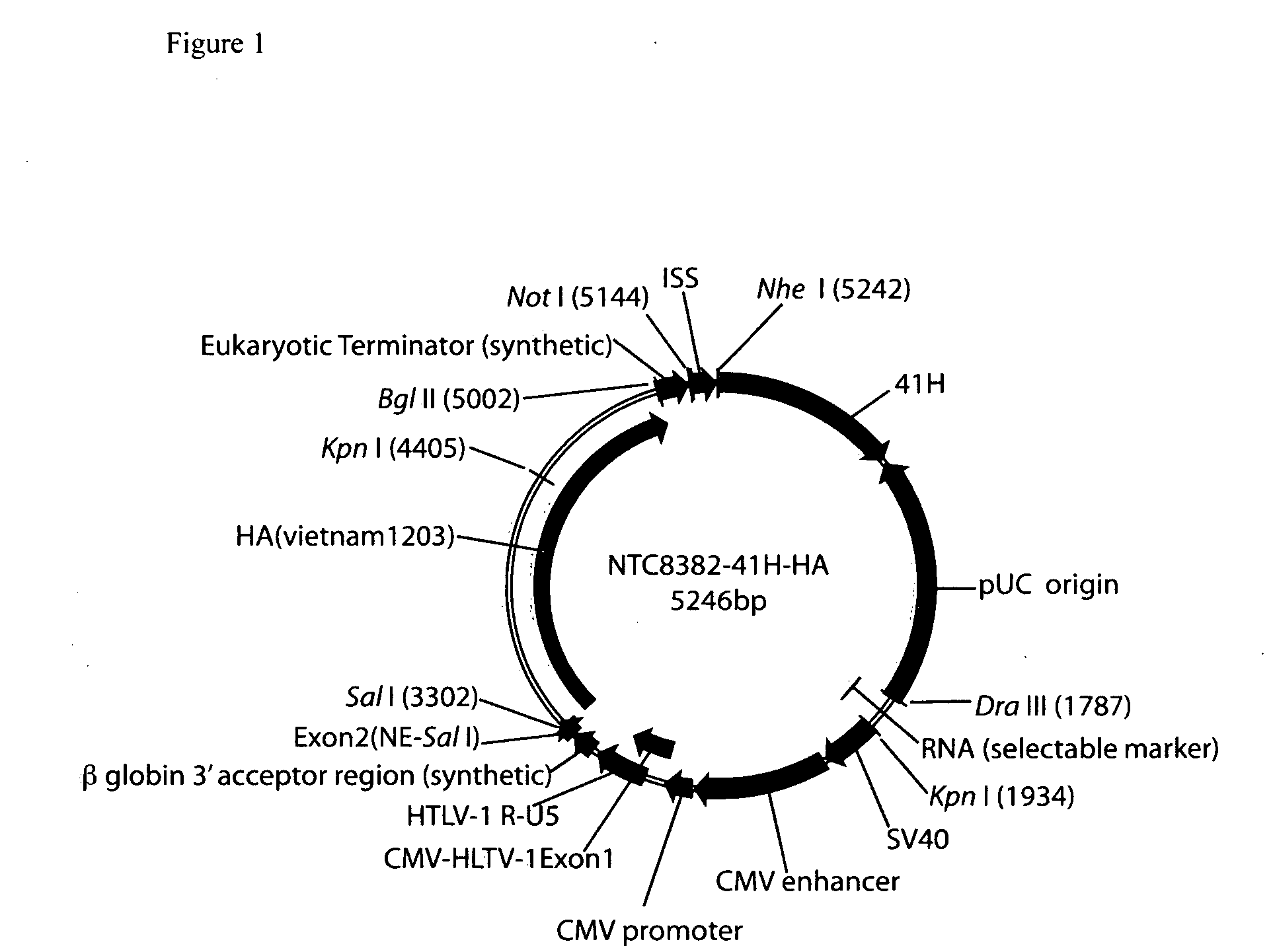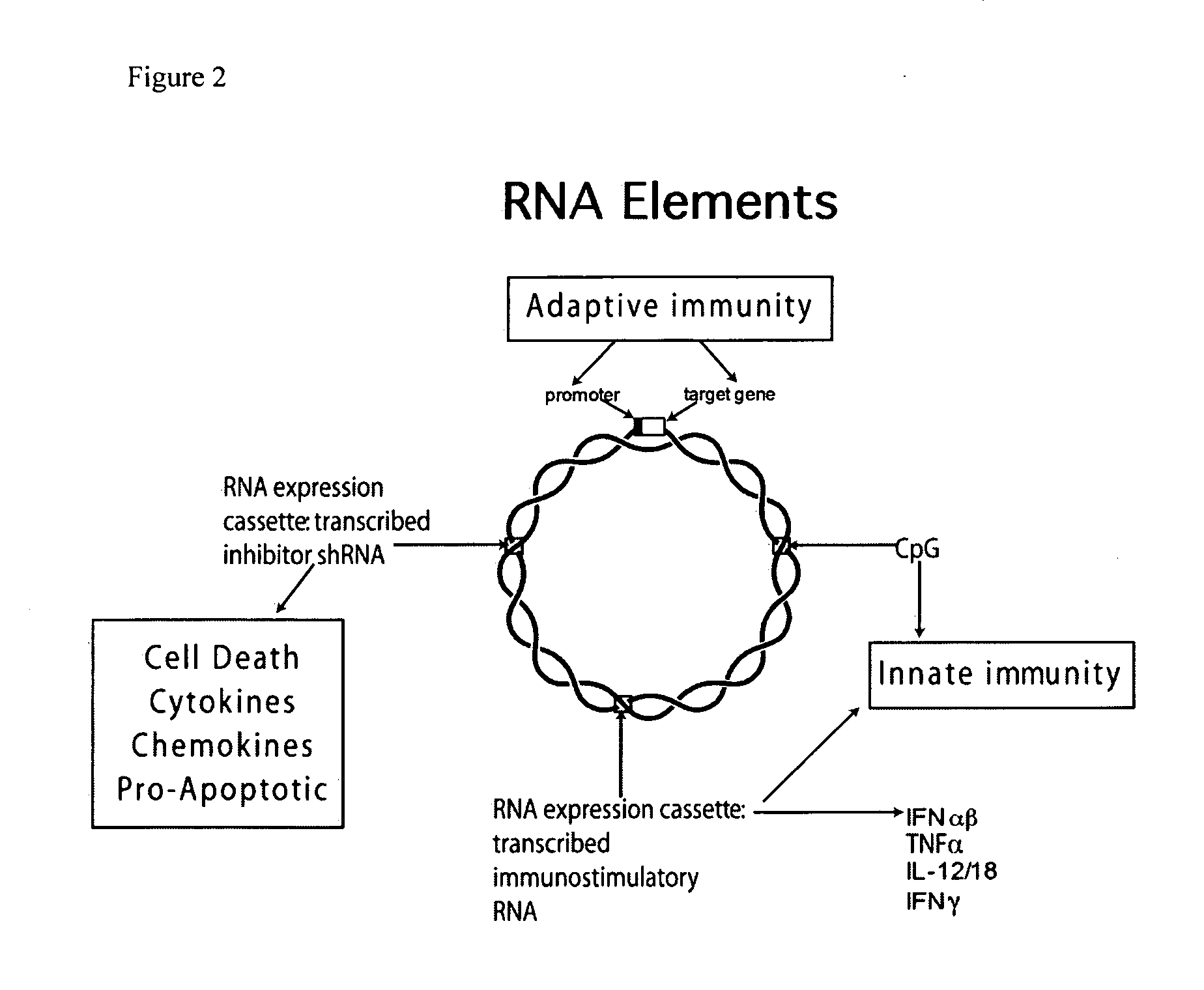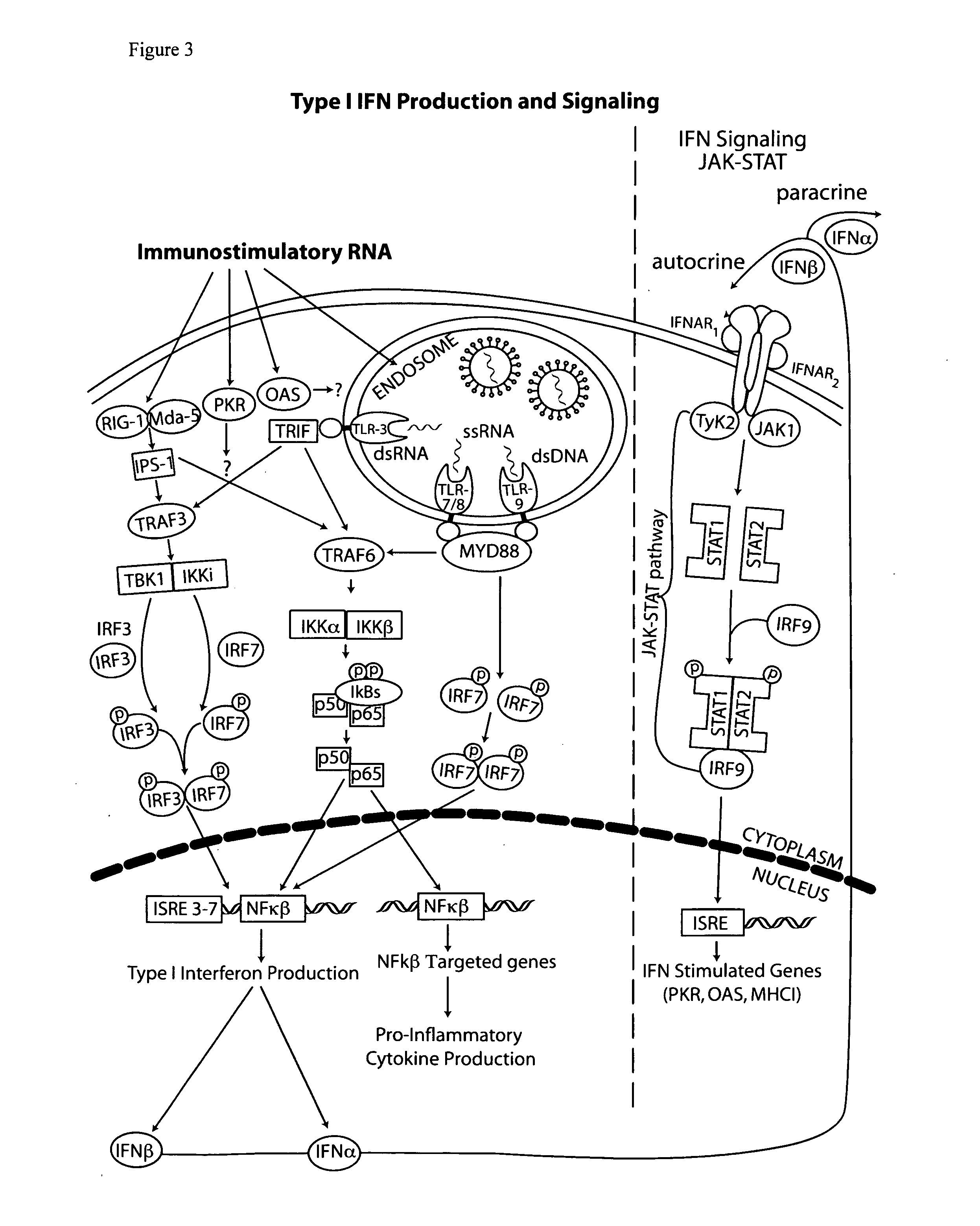Vectors and method for genetic immunization
a technology of plasmids and vectors, applied in the field of eukaryotic expression plasmid families, can solve the problems of reducing the effect of plasmid production, reducing the size of the plasmid, and reducing the effect of antigen expression, etc., to improve the effect of regulatory compliance and potency, plasmid production integrity, and plasmid production yield
- Summary
- Abstract
- Description
- Claims
- Application Information
AI Technical Summary
Benefits of technology
Problems solved by technology
Method used
Image
Examples
example 1
Development of Immunostimulatory RNA Element Plasmids
[0102]Cytoplasmic dsRNA can directly induce dsRNA receptors ADAR, PKR, 2′-5′ oligoadenylate synthetase (OAS), retinoic acid inducible gene 1 (RIG-I) and melanoma differentiation-associated gene 5 (MDA5). Activation of RIG-I and MDA5 (herein referred to as RIG-I pathway) leads to interferon and inflammatory cytokine (e.g. TNFα) production while PKR activation inhibits protein synthesis thus reducing antigen production (reviewed in Wang and Carmichael, Supra, 2004).
[0103]PKR contains two dsRNA binding domains (both of which must be occupied for activation) and recognizes primarily long (>30 bp) dsRNAs. PKR activation is inhibited by a variety of structured viral RNAs, such as adenovirus virus-associated RNAI (herein referred to as VARNAI, VAI or VA 1).
[0104]RIG-I and MDA5 each contain a single dsRNA binding domain. MDA5 recognizes RNA from positive sense ssRNA Picornavirus (EMCV) and poly(I:C) (Kato, H, Takeuchi O, Sato S, Yoneyama ...
example 2
Identification of RNA Element Plasmids that Activate RIG-I
[0140]The vectors from Example 1 were tested for RIG-I activation using either a one or a two step assay. EGFP target gene expression was also monitored in the same experiments as a surrogate assay for PKR activation (PKR inhibits translation, leading to loss of antigen expression). All assays were performed using 24 well cell culture plates. In the two step assay, pI25luc (a reporter plasmid, with the luciferase gene driven by the interferon β promoter) and the cytoplasmic RNA receptor [either human RIG-I (hRIG-I), murine RIG-I (mRIG-I), human MDA5 (MDA5) or dominant negative hRIG-I control (DeNy); pUNO-hRIG-I, pUNO-mRIG-I, pUNO1-hMDA5 or pDeNy-hRIG-I respectively, Invivogen, San Diego Calif.] were cotransformed into human embryonic kidney cell line HEK293 (American Type Culture Collection, Manassas, Va.) using lipofectamine 2000 as described by the manufacturer (Invitrogen, Carlsbad, Calif.). Cells were grown in DMEM:F12+10...
example 3
Synergistic Immune-Stimulation with Combinations of RNA Elements
[0150]The optimal RNA elements (VARNAI, eRNA11, eRNA11a), defined in Example 2, were then combined into a composite RNA element containing both individual components as described in Example 1. The surprising, unexpected result of synergistic activation of RIG-I in the composite RNA elements is shown in Table 2, and FIGS. 7-10. In FIG. 7, the composite structure eRNA41 (eRNA11 and VARNAI) demonstrate synergistic activation of RIG-I. In FIG. 8, a composite RNA element with two copies of VARNAI (VA2x) shows additive activation of RIG-I, while a composite of eRNA11a and VARNAI, 41H, is unexpectedly synergistic. As with the single eRNA containing vector, eRNA11, a blunt 5′ end (41H) in the eRNA11 component of the composite element is superior to recessed (eRNA41) or protruding (eRNA41i) (FIG. 9). Importantly, this is true for both human and murine RIG-I. This demonstrates that the eRNA41H RIG-I activator is not species speci...
PUM
| Property | Measurement | Unit |
|---|---|---|
| Fraction | aaaaa | aaaaa |
| Fraction | aaaaa | aaaaa |
| Immunogenicity | aaaaa | aaaaa |
Abstract
Description
Claims
Application Information
 Login to View More
Login to View More - R&D
- Intellectual Property
- Life Sciences
- Materials
- Tech Scout
- Unparalleled Data Quality
- Higher Quality Content
- 60% Fewer Hallucinations
Browse by: Latest US Patents, China's latest patents, Technical Efficacy Thesaurus, Application Domain, Technology Topic, Popular Technical Reports.
© 2025 PatSnap. All rights reserved.Legal|Privacy policy|Modern Slavery Act Transparency Statement|Sitemap|About US| Contact US: help@patsnap.com



